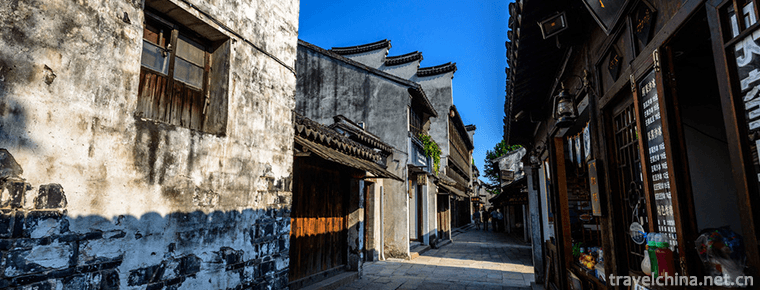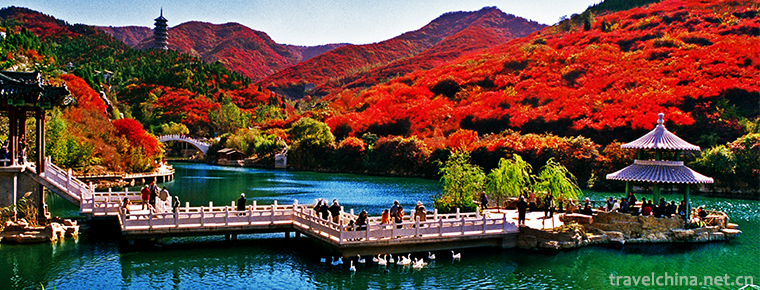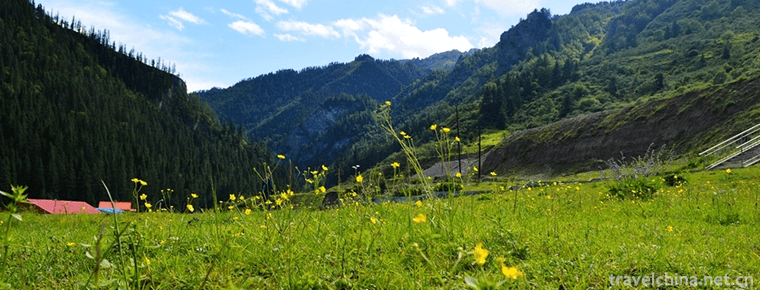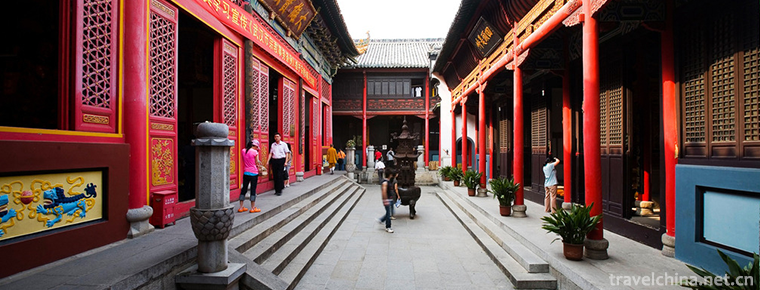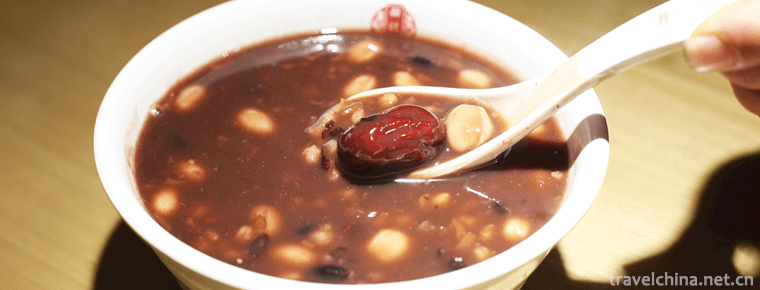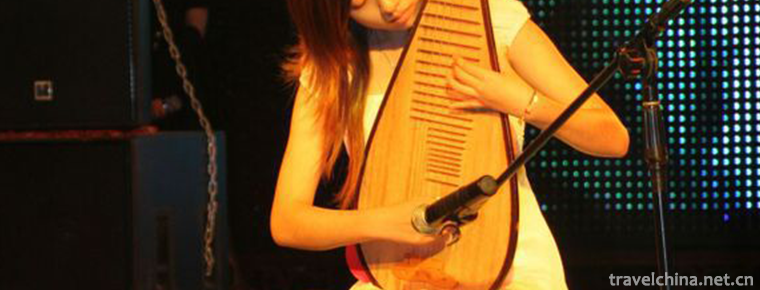Dragon boat Racing
Dragon boat Racing
Dragon boat racing is one of the customs of the Dragon Boat Festival in China, and it is also one of the most important festival folk activities of the Dragon Boat Festival. It is common in southern China. In cities near rivers and lakes in the north, there are also dragon boat racing customs, mostly in the form of dragon boat rowing and Dragon boat dancing.
There are many theories about the origin of dragon boat racing, such as offering sacrifices to Cao'e, Quyuan, water god or dragon god. Its origin can be traced back to the Warring States Period. Dragon boat racing has been introduced to neighboring countries such as Japan, Vietnam and the United Kingdom. It is the official event of the 2010 Guangzhou Asian Games.
On May 23, 2011, dragon boat racing was approved by the State Council to be included in the third batch of national intangible cultural heritage list.
Source Legend
Commemoration of Quyuan
According to the biography of Quyuan Jiasheng in Historical Records, Quyuan was the Minister of King Huai of Chu during the Warring States Period. His advocacy of enlightening virtues and empowering the country and strengthening the army, and United against Qin was strongly opposed by noble Zilan and others. Quyuan was expelled from his post and exiled to the Yuanhe and Hunan valleys. When he was exiled, he wrote immortal poems such as Lisao, Tianwen and Nine Songs, which worried about the country and the people. In 278 B.C., the Qin Army broke through Kyoto, Chu State, and Qu Yuan could not bear to abandon his motherland. On May 5th, after writing his masterpiece "Huaisha", he threw stones into the Miluo River and died.
Legend has it that after Quyuan's death, people in the State of Chu mourned so much that they flocked to the Miluo River to hang on to him. The fishermen rowed their boats and salvaged him up and down the river. They scrambled to catch up with Dongting Lake and disappeared. After that, dragon boats were rowed on May 5 every year to commemorate it. Dragon boats are used to disperse the fish in the river so as not to eat Qu Yuan's body.
In Miluo City, Hunan Province, before the race, they must first go to the temple of Quzi Temple to worship the gods in the temple, wear red cloth on the Dragon head, and then put a dragon head on the boat to race. They worship the Dragon God and commemorate Quyuan. In Zigui, Quyuan's hometown in Hubei Province, there are also rituals of worship to Quyuan. The custom of offering sacrifices to Quyuan is recorded in Sui Shu Geographical Records: "It is full of speed, chaotic songs, noisy water and land, and the viewers are like clouds." Tang Liu Yuxi's "Competition Crossing Song" notes: "Competition Crossing began in Wuling, and now it is in harmony with each other. Its sound is salty:"Where is it?"Simaoqu's righteousness.
Panhu in Yuanling
Long before Quyuan, Yuanling had a dragon boat. Yuanling Dragon Boat originated in ancient times, and the object of sacrifice is Panhu, the common ancestor of all ethnic groups in Wuxi. Panhu once settled in Banxi Stone Cave in Yuanling. He had six children and six daughters. His children intermarried and multiplied into six nationalities: Miao, Yao, Dong, Tu, She and Li. After Panhu's death, the six ethnic groups feasted witches and invited gods to attract their souls. Because of the watertight Yuanling Mountain, the wizard did not know where his soul fell, so he let all ethnic groups build a dragon boat, chase streams and rivers to search for shouts, and even evolved into later boating activities to fete the soul.
In memory of Cao E
In Zhejiang, the Dragon Boat Race commemorates Cao'e. In The Biography of LieNu in the Book of the Later Han Dynasty, Cao E died when she threw herself into the river, while folklore has it that she went down to search for her father's body. There are many sacrifices in Zhejiang Province. The Dianshi Zhai Pictorial Paper "Devoting to Cao'e" describes the scenes of people sacrificing Cao'e in Huiji area. It also has the significance of commemorating Qiu Jin, a modern female democratic revolutionary born there.
Commemoration of Wu Zixu
The record of Wudi (Jiangsu area) race in Qing Jialu is originated in commemoration of Wu Zixu. Therefore, Suzhou has the old custom of sacrificing Wu Zixu at Dragon Boat Festival and held race on water to commemorate it. In addition, there are ceremonies to commemorate Ma Yuan in Guangxi and Yan Wang in Fuzhou.
In 1736, the Dragon Boat Race was held in Taiwan in the 29th year of Qianlong reign of the Qing Dynasty. At that time, Chiang Yuanjun, Taiwan's prefect, hosted the friendship competition at Half Moon Pool of Fahua Temple in Tainan. Taiwan holds dragon boat competitions every May 5. Competition is also held in Hong Kong.
Cultural Connotation
"Dragon Boat Racing" is a custom that existed in the Warring States Period. During the Warring States Period, people carved dragon-shaped canoes in the sound of drums and played Race Games to entertain gods and musicians. At this time, dragon-boat race was a semi-religious and semi-entertaining program in rituals. In the two lakes area, offering sacrifices to Quyuan is closely related to dragon boat racing. Perhaps after the death of Quyuan, Cao'e and Wu Zixu, the local people also used soul boats to send their souls to burial, so there is this custom. But besides commemorating Quyuan, dragon boat racing has also given different meanings to people everywhere.
Before a dragon boat races, it is necessary to invite dragons and worship gods. For example, the dragon boat of Guangdong Province should start from underwater before the Dragon Boat Festival, and after offering sacrifices to the South China Sea God in the temple of the South China Sea, install a dragon head and a dragon tail, and then prepare for the race. And buy a pair of paper cocks and put them on the Dragon boat. They think they can protect the boat. Fujian and Taiwan worship Mazu Temple. Some directly sacrifice the dragon head by the river, killing chickens and dropping blood on the Dragon head, such as Sichuan, Guizhou and other individual areas.
Before the Dragon Boat race, various sacrificial and memorial ceremonies will be held. Generally, incense candles will be lit and paper money burned for chicken, rice, meat, fruit and zongzi. Nowadays, these superstitious and colorful ceremonies are rare, but in the past, when people worshipped the Dragon Temple, the atmosphere was very serious. They prayed for a good harvest in agriculture, good weather, evil removal, disaster relief, good luck in everything, and also for the safety of boating. In people's words, "to be lucky" expresses people's good wishes.
development history
Development stage
As a water sport, dragon boat race has experienced three basic forms: utilitarian, Memorial and competitive.
Utilitarian Dragon Boat Race refers to the initial stage of the birth of the Dragon Boat race, in terms of time, roughly in the pre-Qin period. In primitive times, the ancestors competed in fishing and crossing the water, especially in escape, rescue and fighting.
The commemorative dragon boat race, formed in the Han, Wei and Six Dynasties, has continued to this day. Wu Guozhou's Fengdu Ji is the first document to record the Dragon Boat Festival Festival. It shows that the "Dragon Boat Festival Festival Festival Festival" has become a fashion in the Three Kingdoms. The record of dragon boat race is to commemorate the earliest documents of Quyuan. It is the data left by Wu Jun, Zong Mu and Wei Zheng in the Liang Dynasty. Among them, Wei Zheng wrote in Zhi: "When Quyuan went to Miluo on May Day, the Tu people pursued Dongting and disappeared. The boats on the lake were small and the people of Modiji were singing,"Why did they cross the lake?" As a result, the competition Pavilion is used to pass on the tradition as a competition play. Its rapid and vigorous, chaotic song, noisy land and water, visitors like clouds, the prefectures are free. Since then, the Dragon Boat Festival race has been unified in the cohesive theme of "commemorating Quyuan".
Competitive dragon boat race was formed from 1970s to 1990s. Its development can be traced back to the Hong Kong Dragon Boat Invitational Competition held in 1976. Since then, dragon boat race has become a modern sports event, and the upsurge swept over 30 countries around the world. In the international arena, dragon boat sport is basically a competitive sport. In 1980, dragon boat race was included in China's national sports events, and the "Quyuan Cup" dragon boat race was held every year. On June 16, 1991 (the fifth day of the fifth lunar month), the first International Dragon Boat Festival was held in Yueyang City, Hunan Province, China, Quyuan's second hometown. Before the race, a "dragon head sacrifice" was held, which not only preserved the traditional ceremony but also injected new modern factors. "Dragon head" was carried into Quzi Temple. After the athletes gave the dragon head "Shanghong" (wearing red belt), the main worshiper read out the sacrificial rites and "opened the light" (that is, the finishing touches) for the Dragon head. Then, all the participants bowed three times, and the dragon head was carried to Miluo River and rushed to the Dragon Boat Race field. More than 600,000 people participated in the competitions, fairs and festivals. Later, Miluo City, Hunan Province, facilitated the International Dragon Boat Festival to be held every year on the 5th Dragon Boat Festival in the early May of the lunar calendar.
Declaration of non-relics
On May 18, 2010, the Ministry of Culture of China announced the third batch of national intangible cultural heritage list of recommended projects (new entries). Yuanling County of Hunan Province, Wanjiang District of Dongguan City of Guangdong Province, Tongren City of Guizhou Province and Zhenyuan County of Guizhou Province jointly declared "Dragon Boat Race" as the intangible cultural heritage of traditional sports, recreation and acrobatics.
Dongguan Dragon Boat Race
Dongguan Dragon Boat Month is the most influential traditional cultural activity in Dongguan. Dongguan people's dragon boat race is not a day or two, but a month, so it is called Dragon Boat month. Dragon Boat Festival's main activity is dragon boat race. From the beginning of May in the lunar calendar every year, Dongguan has started a month-long dragon boat race. According to the local tide size, the days of dragon boat landscape in Dongguan Shuixiangpian and the towns (streets) along the Dongjiang River are determined. Bidding is called competition, that is, competition; not bidding is called taking advantage of the scenery. "Dongguan County Record" records: "May Shuo (the first day of junior high school), drinking calamus realgar wine, to avoid bad luck. Corn millet is a dragon boat race. On the fifth day, the congregation will benefit the public. Festivals are recommended to ancestral temples. From Shuo to Wang, the most prosperous race, Dragon Boat long to more than ten Zhang. In the middle is the Jinting Pavilion. Painting boats are gathered together, and the head and tail are joined together to ride the tide. The orchestra is still at dusk, and there is a huge view in Guzhen.
Historical Origin
In the late Ming and early Qing Dynasties, Qu Dajun, a well-known scholar in Guangdong, wrote in Volume 18 of Guangdong Xinyu: "In May, the torrential current was in full swing, and it was put in a hundred miles." Villagers for the Dragon Boat meeting, viewers draw boats, head and tail rank, ladies and gentlemen like mountains, ride the tide, the day is not over. The dragon boat is more than ten feet long, seven or eight feet high and two feet long. Six or seven people sit in the forehead and neck. There are Jinting, sitting double. There were no fewer than seventy or eighty flag bearers, cappers, drums and radio-wielding banners. Race is surging, thunderstorms crossing. The boat went away and the water marks could not close for a long time. He is also the most extravagant tourist. Guangzhong Dragon Boat, Dongguan is the most prosperous. From May to the obscurity, there are villages and villages. Such as Pengxia, you can remember. Guangzhong (Pearl River Delta) dragon boat, but Dongguan is the most prosperous. From May Shuo to Hui (from the first day of the first day to the thirtieth day of the first day), there are villages and towns.
"Dongguan County Record" records: "May Shuo (the first day of junior high school), drinking calamus realgar wine, to avoid bad luck. Corn millet is a dragon boat race. On the fifth day, the congregation will benefit the public. It is recommended to the ancestral temple with festivals. "Citizens often wear small sachets, which are called noon sachets." "From Shuo to Hope, the competition is the most prosperous, Dragon Boat long to more than ten Zhang. In the middle is the Jinting Pavilion. Painting boats are gathered together, and the head and tail are joined together to ride the tide. The orchestra is still at dusk, and there is a huge view in Guzhen.
development history
Since the Song Dynasty, people in Dongguan have been rowing dragon boats, washing dragon boat water, eating dragon boat cakes, eating Dragon Boat meals and singing Dragon Boat songs every year since the eighth day of April in the lunar calendar. They have been known as the Dragon Boat Moon since May 30. Every year on the first day of May in the lunar calendar, Wanjiang holds a large-scale dragon boat championship, which is known as "the first scene of Dongguan dragon boat". There are poems like "the first dragon rises in early May and the dragon boat race on the Wanjiang River". After "Dongguan Dragon Boat First Scene", the local governments agreed to set their own Dragon Boat Scenic Days such as Fenxi Scenic Days on May 4th, New Town Scenic Days on May 10th and New Village Scenic Days on May 14th. All villages in Wanjiang District held dragon boat races with their own characteristics and participation by the whole people. Until the end of the month, the people of Wanjiang took "Dongguan Dragon Boat First Scenic Days" as their honor and maintained it as a traditional day up to now.
Dragon Boat Race
Introduction to Dragon Boat
Dragon boats vary in size and number of radial hands. Generally, it is long and narrow, with a faucet on the bow and a tail on the stern. The color of the dragon head is red, black and grey, which are similar to the head of the dragon lantern and have different postures. Generally, it is carved from wood and painted (also with paper and yarn). Dragon tail is carved with whole wood and scales. Besides the dragon head and tail, the dragon boat is decorated with gongs and drums, flags or hull paintings. Ancient dragon boats are also gorgeous, such as Dragon Pool Race Picture Volume, in which the Dragon boat's head is high, huge and divine, carved beautifully, the dragon tail is high, and the dragon body has several layers of double eaves and pavilions. If it is realistic, it can prove the beauty of ancient dragon boats. In some areas, there are still ancient customs in Dragon boats.
Dragon boats vary in size from place to place. For example, dragon boats in Huangpu and suburban areas of Guangzhou are 33 meters long, with 100 people on the road and 80 people on the radial hand. The dragon boat in Nanning is more than 20 meters long, with about 560 people per boat. The dragon boat in Miluo City, Hunan Province is 16-22 meters long, with 24-48 people scratching their hands. Fujian Fuzhou Dragon Boat is 18 meters long and 32 people scratch their hands. Competition is within the prescribed distance, and set sail at the same time, in order to reach the end of the decision ranking. Dragon boat races are slightly different among different ethnic groups in China.
The dragon boat race of the Han nationality is held at the Dragon Boat Festival every year. The captain is usually 20-30 meters. There are about 30 sailors on each boat. The Miao people hold the Dragon Boat Festival from May 24 to 27 every year. The captain is about 20 meters wide and 1 meter wide. It is made up of three straight and thick fir trees which are digged into troughs and tied together. The middle is a mother ship and the two sides are sub-boats. There are 38 sailors on each ship. One elder serves as a drum head and the other as a boy dressed as a girl serves as a drummer. During the competition, at the sound of the gun, the sailors paddled in the rhythm of gongs and drums.
Dai dragon boat racing is held in June and July (about 10 days after Qingming Festival) every year. There are 600 sailors, 4 helmsmen and 4 guides on each boat. During the competition, one person beats a gong and the sailor paddles along at the rhythm of the gong. There are also women involved in this activity.
The Miao dragon boat race is held every year from May 24 to 27 in the Dragon Boat Festival to celebrate the success of the Dragon Boat transplanting and to wish Wugu Fengdeng the best. The boat is about 20 meters long and 1 meter wide. It is made up of three straight and thick fir trees, which are digged into troughs and tied together. There are 38 sailors on each boat, with an elder as the drummer and a child as the drummer. During the competition, at the sound of the gun, the sailors paddled in the rhythm of gongs and drums.
As for the formal competition, the Tang Dynasty poet Zhang Fengfeng's "Song of Competition" vividly and vividly described the magnificent scenery of the Dragon Boat race. Dragon boats under the command of drums and red flags came flying, falling like swords and thundering drums; the end point was marked by Jin Qi colorful poles; and the dragon boat was flying towards the mark. Modern dragon boat races are almost the same, but the rules are a little stricter. International dragon boat races have appeared both at home and abroad, attracting athletes from all over the world.
Competition Base
Tongren City, Guizhou Province (Bijiang District) has a long history of dragon boat racing. Dragon boat racing has become a representative symbol of the local national culture. In 2009, Tongren City (today's Bijiang District) was awarded "Township of Chinese Traditional Dragon Boat", and in 2011, Tongren Dragon Boat Race was listed as the third batch of national intangible cultural heritage as a traditional sports item.
Dragon Boat Base is located in Ming Paradise, which is built on Jinjiang River. The picturesque scenery not only shows the charm of Jinjiang scenic spot, but also serves as a carrier to show the local characteristics of dragon boat culture. Dragon boat culture will be inherited through such thematic activities as "Dragon Boat Festival Experience and Dragon Boat Health Culture". To attract tourists and create new tourism experience projects. Tourists can experience the fun of the Dragon Boat Festival at any time here, and participate in the Dragon Boat Festival activities with strong local characteristics, such as wrapping zongzi, weaving colorful ropes, offering sacrifices to dragons, rowing dragon boats, and water splashing festival.
During the Dragon Boat Festival, many large-scale national dragon boat races have been held in the Daming Border City Scenic Area, such as the Chinese Dragon Boat Competition and the Chinese Dragon Boat Open Competition. In addition, the annual Dragon Boat Race in Tongren Dragon Boat Festival also has a very deep mass base. Every year during the race, Dragon Boat enthusiasts from all over the country come to the Daming Border City scenic spot to watch the Dragon Boat race.
Location of Dragon Boat Base: Guizhou Tongren City (Bijiang District). Daming Border City Scenic Area
Arrival route:
1. Daming Biancheng Scenic Area is located in Bijiang District (Crystal Pavilion) of Tongren City, Guizhou Province, 3 kilometers from Tongren Railway Station, 2.5 kilometers from Tongren High-speed Exit (South), 20 kilometers from Tongren Phoenix Airport and 50 kilometers from Hunan Phoenix Ancient City (High-speed). It is very convenient to reach the Scenic Area.
2. Bus routes: Tongren City has a tourist line 1 directly to the Daming Border Town Scenic Area (ticket price 1.5 yuan).
Cultural communication
With the footprints of overseas Chinese spreading all over the world, the Dragon Boat Festival has gradually sprung up in Western countries. Among overseas Chinese and Chinese cultural enthusiasts in European and American countries, the Dragon Boat Festival is mainly carried out in the form of dragon boat race. It is combined with sports and competitive culture in Western countries. In Germany, the Drac Boat Festival is translated into Drac Boat Festival. Henbootfest, the Grand Elysee Hamburg Dragon Boat Team participates in the 2016 Dragon Boat Race on Lake Ulster in Hamburg.
Ancient Poetry
Dragon boat racing is also a great opportunity for many scholars to capture inspiration and display their talents. For thousands of years, numerous poems and lyrics about Dragon Boat Racing in the Dragon Boat Festival have shown the rich cultural connotations of Dragon Boat Festival customs. These poems depict the hot scenes of dragon boat race from different aspects, leaving behind a lot of beautiful scenery for future generations. In Liu Yuxi's Competition Song, the scene of Yuanjiang Dragon Boat Race and the spectacular scene of winning the bid are described in detail. Liu Yuxi accurately depicted the joy of the winner, the frustration of the loser and the fact that people played in the water after the game and the colorful flags on the shore. Ten poems by Huang Gongshao, a famous poet of the Song Dynasty, also describe the Dragon Boat Race in Hangzhou West Lake in detail.

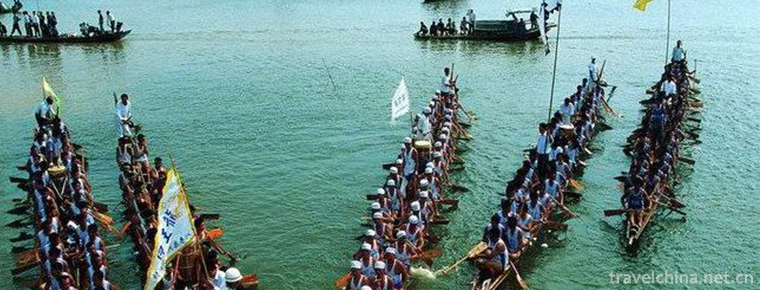
-
Old Summer PalaceYuanmingyuan
No. 28 Qinghua West Road, Haidian District, Beijing, China.
Views: 115 Time 2018-10-03 -
Nanxun ancient town Scenic Area
Nanxun Ancient Town is located in Nanxun District of Huzhou City, at the junction of Jiangsu, Zhejiang and Shanghai provinces. .
Views: 220 Time 2018-12-07 -
Huangguoshu Waterfalls Scenic Area
Huangguoshu Scenic Spot is a key national scenic spot, located in southwest Guizhou Province, 128 kilometers away from Guiyang City, the capital of Guizhou Province.
Views: 167 Time 2018-12-12 -
Jiulushan Waterfalls Scenic Spot
JiuRushan Waterfall Group Scenic Area - National AAAA Class Scenic Area and National Forest Park, located in Xiying Town, Jinan City, Shandong Province, is the source of Jinxiuchuan Reservoir.
Views: 205 Time 2018-12-22 -
Dayugou Scenic Area
Dayugou Scenic Area is located in Dayugou, Muer Township, Zhuoni County, Gannan Tibetan Autonomous Prefecture. It is 12 kilometers away from the county seat and has a total area of 105214.6 hectares..
Views: 164 Time 2019-01-07 -
Gui Yuan Temple
Guiyuan Chan Temple is located in Guiyuan Temple Road, Hanyang District, Wuhan City, Hubei Province. It was built by Master Baiguang in the fifteenth year of Shunzhi Qing Dynasty (1658 A.D.). Covering.
Views: 125 Time 2019-01-13 -
Babao black rice porridge
Babao black rice porridge is a traditional snack and a food for Laba Festival. Purple and black, soft and waxy, sweet and fragrant. Developed from Babao glutinous rice porridge, it has the function of.
Views: 172 Time 2019-03-25 -
Han music in Guangdong
Guangdong Han music is an ancient music of the Central Plains brought about by Hakka ancestors when they moved southward more than 1,000 years ago..
Views: 153 Time 2019-05-01 -
International cooperation of Chengdu Giant Panda Base
According to the major political and diplomatic needs of the country, under the leadership of the state, provinces and cities, the panda base has successively established a "long-term international cooperative breeding program for giant pandas" with Japan, the United States.
Views: 112 Time 2020-12-13 -
Guangyuan secondary industry
In 2018, the total industrial added value of Guangyuan was 30.018 billion yuan, an increase of 9.4% over the previous year. The contribution rate of industry to economic growth is 44.3%, which drives economic growth by 3.7 percentage points..
Views: 329 Time 2020-12-15 -
Suining medical and health
By the end of 2019, there are 3725 medical and health institutions in Suining, including 76 hospitals (63 private hospitals) and 3622 primary medical and health institutions; there are 21400 beds in medical and health institutions and 18200 health technicians.
Views: 381 Time 2020-12-16 -
Nanchong Education
By the end of 2019, there were 271 primary schools in Nanchong, with 57000 students enrolled and 356700 students in school. The enrollment rate of primary school-age children was 100%. There are 427 junior high schools with 62900 students and 185300 students in school..
Views: 337 Time 2020-12-17

